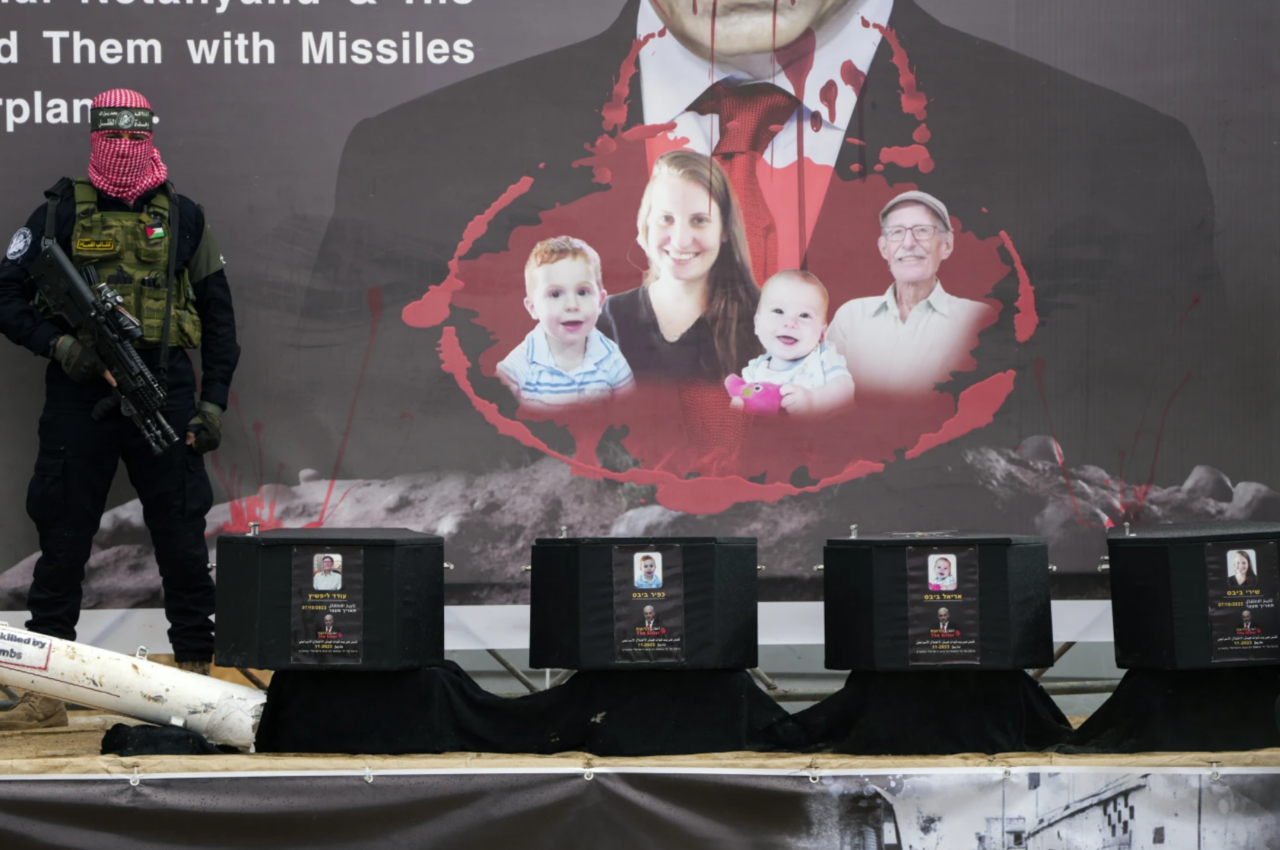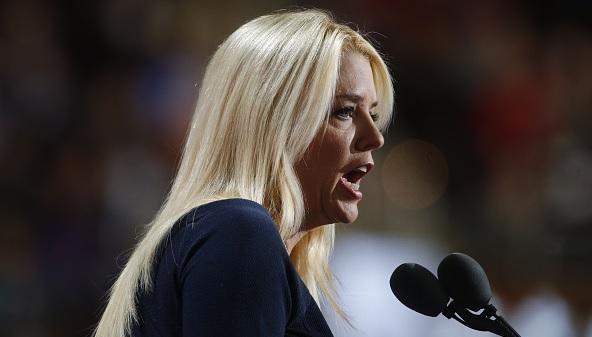Hamas on Thursday released the bodies of four Israeli hostages, said to include a mother and her two children who have long been feared dead and had come to symbolize the nation’s agony following the attack led by the militant group on southern Israel in 2023.
The remains were presumed to include Shiri Bibas and her two children, Ariel and Kfir — and the Israeli government confirmed that one of the bodies returned was of Oded Lifshitz, who was 83 when he was abducted. Kfir, who was 9 months old when he was kidnapped, was the youngest captive. Hamas has said that all four were killed along with their guards in Israeli airstrikes.
Prime Minister Benjamin Netanyahu’s office said that Lifshitz was killed in captivity by the Islamic Jihad militant group. It gave no further details.
The somber mood across Israel on Thursday contrasted with the sense of joy and relief that have accompanied the recent return of living hostages under the month-old ceasefire between Israel and Hamas.
Thousands of mourners carrying Israeli flags and yellow solidarity flags lined Israeli highways to pay tribute as vehicles carrying the remains drove by. As bands of pouring rain moved through the area, they wiped away tears or quietly sang the national anthem as the convoy passed. Just before sunset, a double rainbow unfolded across the sky.
In Tel Aviv, thousands of people gathered at the city’s Hostage Square for a ceremony, including the recitation of traditional mourning prayers. Some in the crowd held orange balloons, in honor of the Bibas boys, and the crowd swelled after sundown as musicians performed subdued ballads, matching the nation’s sadness.
“Our hearts — the hearts of an entire nation — lie in tatters,” Israeli President Isaac Herzog said in a statement. “On behalf of the State of Israel, I bow my head and ask for forgiveness. Forgiveness for not protecting you on that terrible day. Forgiveness for not bringing you home safely.”
Before the handoff of the bodies, militants in the Gaza Strip displayed four black coffins on a stage surrounded by banners, including a large one depicting Netanyahu as a vampire. Thousands of people, including large numbers of masked and armed militants, looked on as the coffins were loaded onto Red Cross vehicles before being driven to Israeli forces.
The Israeli military held a small funeral ceremony, at the request of the families, before transferring the bodies to a laboratory for formal identification using DNA, a process that could take up to two days.
Lifshitz’s family later said that his remains had been officially identified.
“We had hoped and prayed so much for a different outcome,” they said in a statement. “Now we can mourn the husband, father, grandfather, and great-grandfather who has been missing from us” since the start of the war on Oct. 7, 2023.
Israelis have celebrated the return of 24 living hostages in recent weeks under a tenuous ceasefire that paused over 15 months of war. But the handover on Thursday was a grim reminder of those who died in captivity as the talks leading up to the truce dragged on for more than a year.
The four bodies were the first of eight hostages that Israel believes are dead that are set to be returned during the current phase of the ceasefire. It could also provide impetus for negotiations on the second stage of the ceasefire that have hardly begun. The first phase is set to end at the beginning of March.
Infant was the youngest taken hostage
Kfir Bibas was just 9 months old, a red-headed infant with a toothless smile, when militants stormed into the family’s home on Oct. 7, 2023. His brother, Ariel, was 4. Video shot that day showed a terrified Shiri swaddling the two boys as militants led them into Gaza.
Her husband, Yarden Bibas, was taken separately and released this month after 16 months in captivity.
Relatives in Israel have clung to hope, marking Kfir’s first and second birthdays and his brother’s fifth. The Bibas family said in a statement Wednesday that it would wait for “identification procedures” before acknowledging that their loved ones were dead.
Supporters throughout Israel have worn orange in solidarity with the family — a reference to the two boys’ hair color — and a popular children’s song was written in their honor.
Like the Bibas family, Oded Lifshitz was abducted from Kibbutz Nir Oz, along with his wife, Yocheved, who was freed early in the war as an apparent humanitarian gesture.
Hamas-led militants abducted 251 hostages, including about 30 children, in the Oct. 7 attack, in which they also killed around 1,200 people, mostly civilians.
More than half the hostages, and most of the women and children, have been released in ceasefire agreements or other deals. Israeli forces have rescued eight and have recovered dozens of bodies of people killed in the initial attack or who died in captivity.
It’s not clear if the ceasefire will last
Hamas is set to free six living hostages on Saturday in exchange for hundreds of Palestinian prisoners, and says it will release four more bodies next week, completing the ceasefire’s first phase. That will leave the militants with about 60 hostages, all men, around half of whom are believed to be dead.
Hamas has said it won’t release the remaining captives without a lasting ceasefire and a full Israeli withdrawal. Netanyahu, with the full backing of the Trump administration, says he’s committed to destroying Hamas’ military and governing capacities and returning all the hostages, goals widely seen as mutually exclusive.
Trump’s proposal to remove about 2 million Palestinians from Gaza so the U.S. can own and rebuild it, which has been welcomed by Netanyahu but universally rejected by Palestinians and Arab countries, has thrown the ceasefire into further doubt.
Hamas could be reluctant to free more hostages if it believes that the war will resume with the goal of annihilating the group or forcibly transferring Gaza’s population.
Israel’s military offensive killed more than 48,000 Palestinians, mostly women and children, according to Gaza’s Health Ministry, which doesn’t distinguish between civilians and combatants in its records. Israel says it has killed more than 17,000 fighters, without providing evidence.
The offensive destroyed vast areas of Gaza, reducing entire neighborhoods to fields of rubble and bombed-out buildings. At its height, the war displaced 90% of Gaza’s population. Many have returned to their homes to find nothing left and no way of rebuilding.
___
Republished with permission of The Associated Press.
Post Views: 0

 Entertainment8 years ago
Entertainment8 years ago
 Entertainment8 years ago
Entertainment8 years ago
 Politics8 years ago
Politics8 years ago
 Tech8 years ago
Tech8 years ago
 Tech8 years ago
Tech8 years ago
 Tech8 years ago
Tech8 years ago
 Politics8 years ago
Politics8 years ago
 Tech8 years ago
Tech8 years ago










